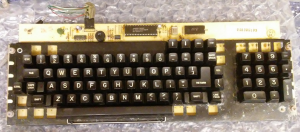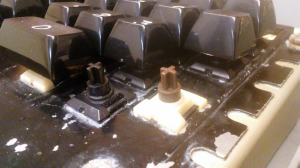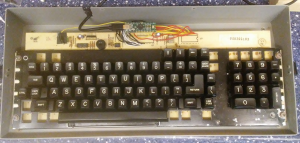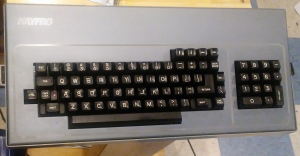This is a cross post but I thought it was kind of a cool old board so I figured I'd post it here too. The switches appear to be most likely SMK J-M0404.


I traced out the matrix with a multimeter, then desoldered the ICs and hooked up the Teensy.


It's short a lot of the keys that are standard now, but I just like the old style boards. The keycaps are nice heavy sphericals and the switches are pretty nice too, if you like linears.